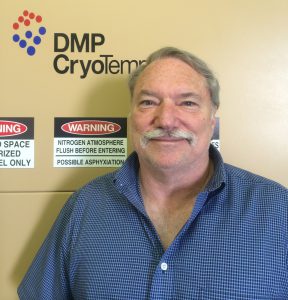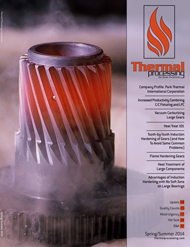
What are some factors one should consider in cryogenic processing of gears?
First off, what is the size I need? Secondly, how do I want to load it? Front load swing, front load guillotine, top load chest-style? Also, what am I going do with it, and what temperature range do I want?
When a customer calls up and says, “Hey, I want a top load, I’m going to use a crane, I need to put in a 40-inch diameter gear, and all I’m going to do is freeze,” I try to talk them into buying the CryoTemper. If they take that frozen gear out, it’s going to frost up because it’s cold. It’s exposed to humid room atmosphere, which turns to frost in it. The only way to get rid of the frost is to thaw the entire thing out. The frost turns to water, drips on the floor—condensation that eventually is on the part. If it’s a steel part, you’ll likely have some oxidation or rust starting. I always recommend someone use at least enough heat to bring it back to ambient in a nitrogen atmosphere, hence the CryoTemper.
When you’re dealing with bearings and gears, rust is bad news.
Very bad news. Additionally, you’re handling a gear that could be 100°C below zero. You can’t handle it without somebody getting freezer burns, or wearing gloves. When the gear thaws out, you’ve got water spots and maybe a puddle on the floor, depending on the mass of the parts you take out. With a CryoTemper or CryoFurnace, the part goes in, it’s dry, it’s clean, there’s no oil or lubricant, no rust inhibitor on it, it comes out at room temperature looking just the way it went in, and no secondary cleaning.
We delivered a machine to a guy who does brake rotors. These are cast iron, which rusts very easily. He’d freeze them in another brand machine, but he always had the need to put rust inhibitor on them. After deep cryogenic treatment, he had to wash them to get the inhibitor off so it wasn’t putting oil on the pads. When he bought our machine and we went up there for training and installation, on the maiden run he wanted to run 1,000 pounds of brake rotors. He was very pleased to find no rust on the parts when the doors opened up.
So it’s complete thermal cycling?
Absolutely. You can control the time you want to stay at a temperature, or change them both. All these together—10, 15, 20 different segments so that you get a freeze, a temper, back to room temp, another temper, back to room temperature, and so on. When it’s all finished, it doesn’t make any difference what the weather is outside—you’ve started the second segment at the end of the first one, knowing every component is treated exactly the same, start to finish, every time.
Because we also use a PLC or programmable controller to control the temperature, we’re going down in temperature at exactly the rate you want, whether it’s plugged in as degrees per minute, or a set point at such and such time, “I want to be at minus 300 degrees in five hours” it will do what you tell it. Furthermore, the parts were loaded in 1 machine and all the thermal cycling was completed without having to move the load back and forth from different machines.
DMP CryoSystems employs the use of liquid nitrogen. What do you find most beneficial about this approach?
Well, the use of nitrogen reduces the oxygen and moisture content in the chamber until it is nearly a pure nitrogen atmosphere. So as long as the door is kept closed throughout the process, the parts are never exposed to moisture.
Also, most heat treat facilities already have a liquid nitrogen bulk tank, and while they’re normally set at higher pressures because of the volumes of gasses that they need in their vacuum furnaces and other equipment, they have an established supply of cooling energy.
The nitrogen cooling is much faster, and more controllable than refrigeration. Refrigeration coils can’t handle the high temperatures that we have in our CryoFurnace and the maintenance of the compressor can become much more expensive than that of the solenoid valve
DMP CryoSystems’ machines are very adjustable. Tell our readers about their dynamic uses.
We can modify the loading conditions. If somebody wants to use a manual loader, which is typically the case when they’ve got a vacuum furnace, it’s very gentle on the furnace. We can set up the loader guide rails and hearth rails and spacing so that they use the same loader from one, put ours alongside, and it’ll load exactly the same way. If they want to do a lights out scenario, where they’ve got an automatic feed charge car, we can do the same thing, so that we have light reflector indicators or stop paths or something on the front of the machine. Chain guides and roller rail system on the inside so that it operates exactly the way somebody else’s does. We also have Ethernet communication so that we can easily connect to the customer network for DATA collection If the customer wants to tie onto the internet, we can look at it remotely, from our office to help troubleshooting.




























